Featured Ingredient: Bok Choy
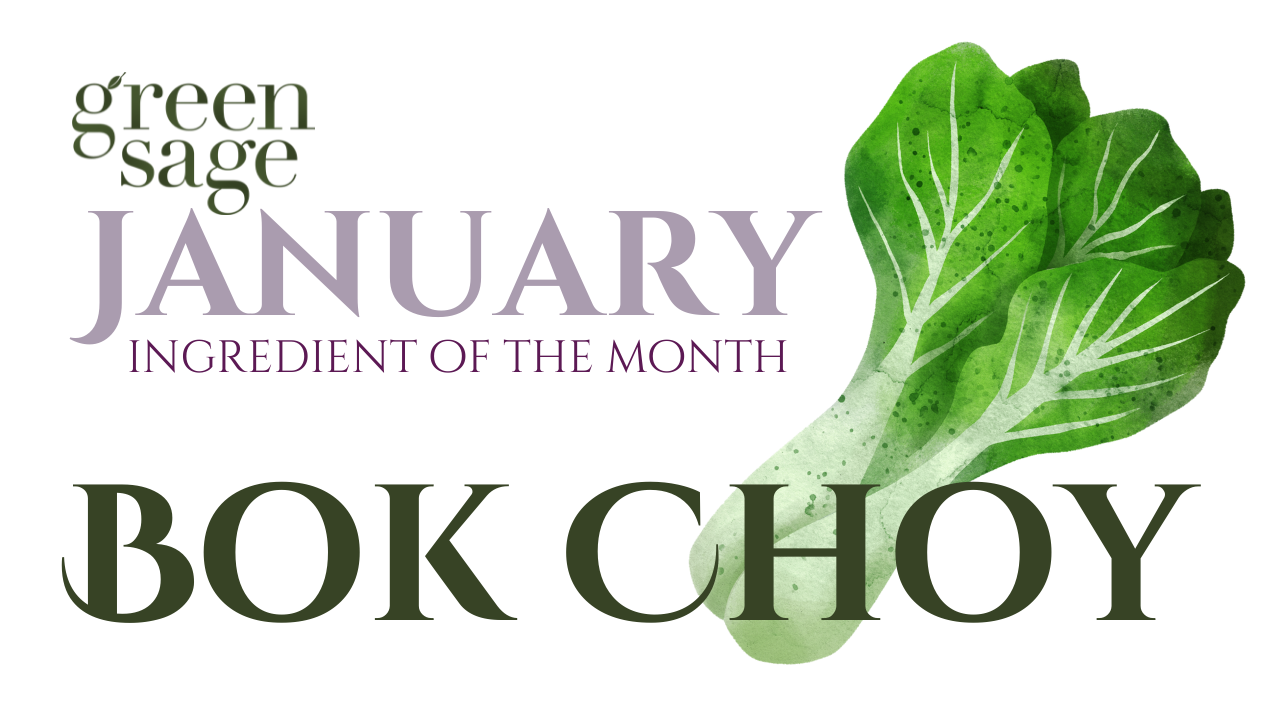
Each month in 2022 I'll be featuring one plant-based food that I designate as my Seasonal Ingredient of the Month.
The purpose is to help you explore new foods you might not be used to preparing for yourself at home, so you can expand your cooking horizons and get healthier along the way.
It's always a great idea to eat a wider variety of plant-based foods in order to include a broader spectrum of vitamins, minerals, and phytonutrients in your diet.
Another goal of this monthly series is to help you get to know which foods are in season throughout the year.
My hope is that this will allow you to choose more seasonal foods when you shop, as these often come from more local farms and have a lesser environmental footprint as a result.
And now, without further ado, The Green Sage Seasonal Ingredient of the Month for January 2022 is...
(Sounds so official, doesn't it?)
Bok Choy!
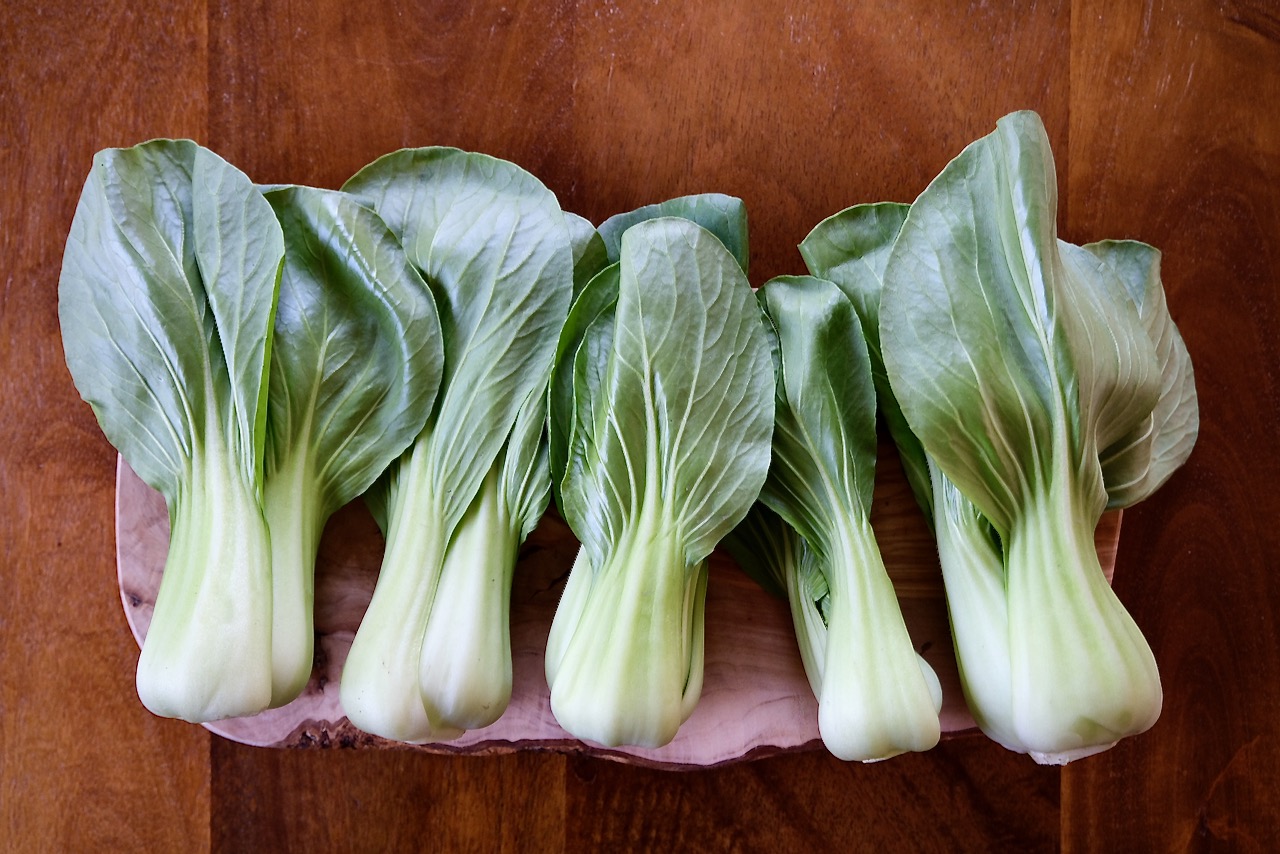
And I'm genuinely excited to feature it, because it's so delicious and, in my opinion, very underrated. I honestly cannot get enough of this yummy, super-nutritious veggie.
So let me tell you a bit more about it.
Bok choy is another name for Chinese Cabbage, and in some regions you'll see it referred to as pak choi or pok choi.
You'll commonly find it in supermarkets in two forms, and both are delicious:
- Baby bok choy
The smaller, less mature version of bok choy is also slightly sweeter. The stalks are pale green and the leaves are a vibrant medium-green color.
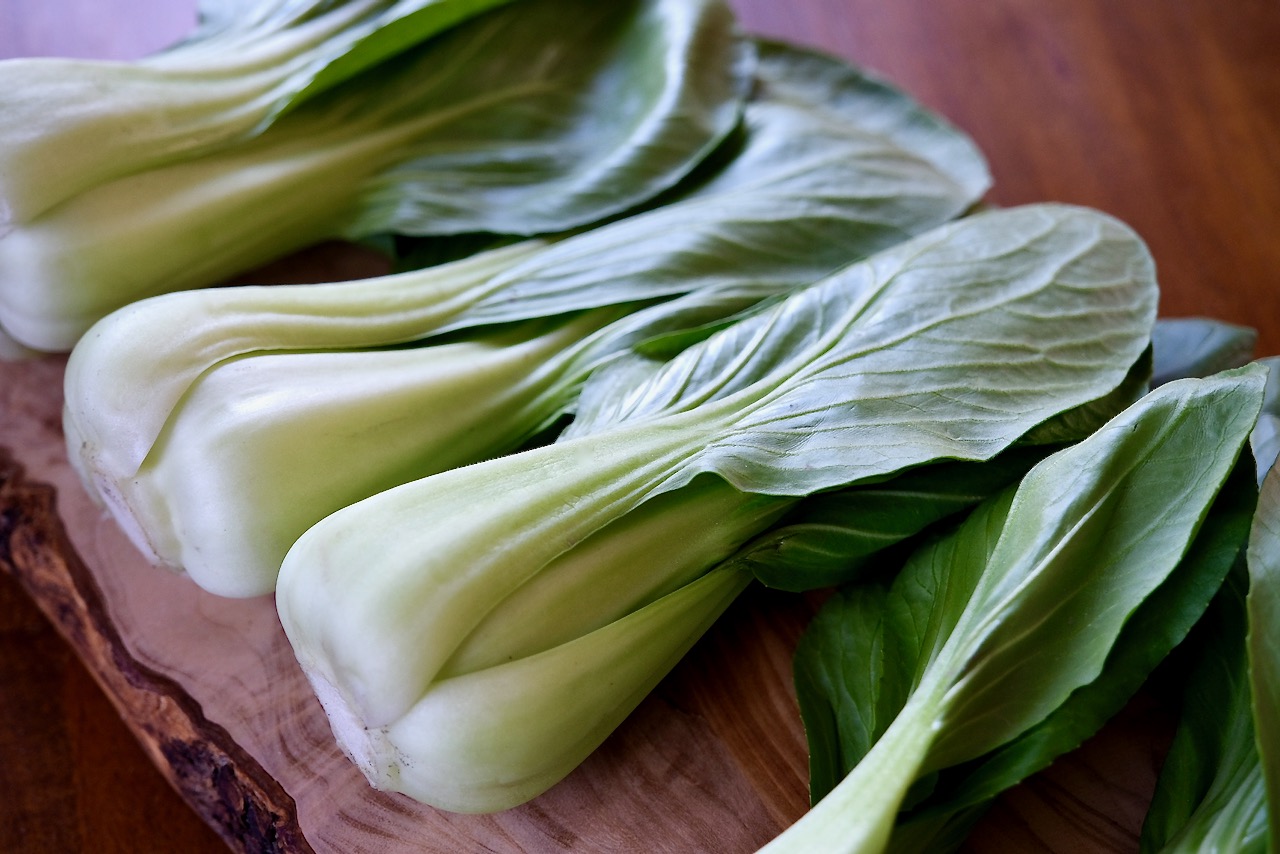
The photo above is my own. I picked up a sizable box of these little beauties from the produce fridge at Costco.
- Mature bok choy
As the plant grows into full maturity, the stalks become white and the leaves turn dark green.
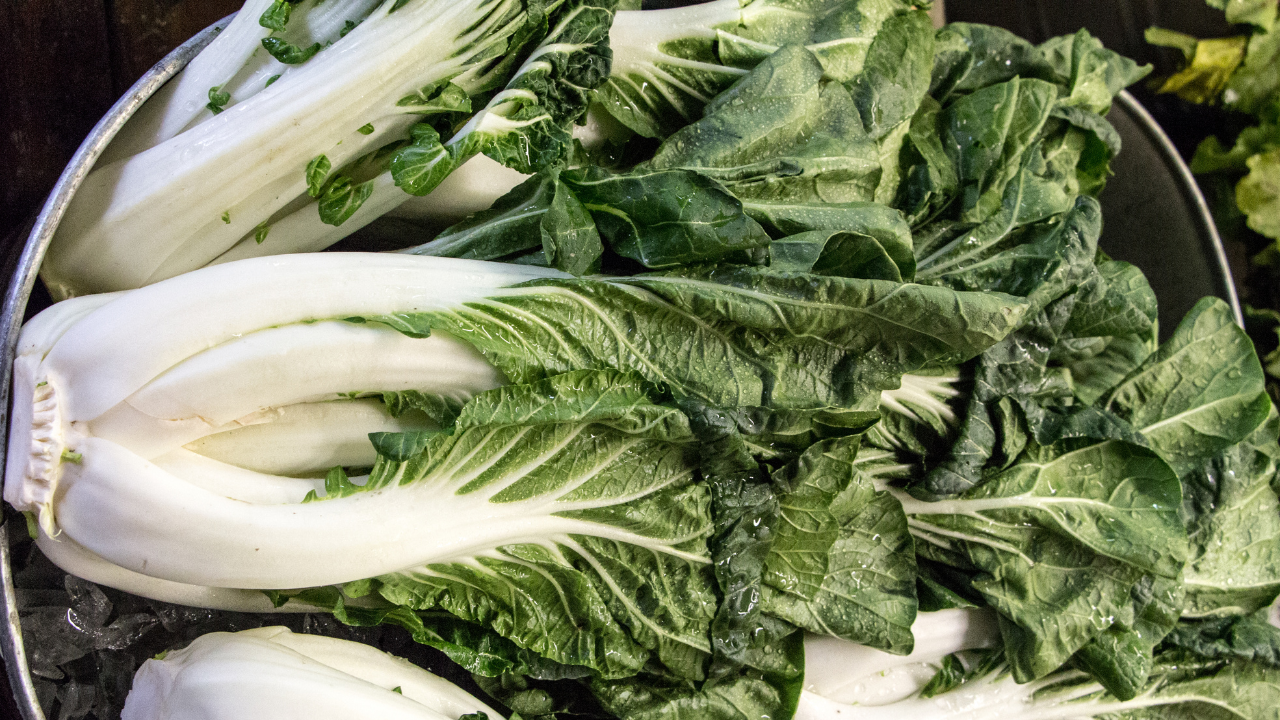
[mature bok choy photo credit: Getty Images]
Personally, I always look for baby bok choy at the market first, because it's small and easy to prep, and the flavor is milder.
However, if all that's available at the grocery store is mature bok choy, I'm perfectly happy to go home with a big bunch of it.
What is it?
Bok choy is a leafy green cruciferous vegetable. The term cruciferous refers to the fact that its leaves grow in a cross-like formation. They are also referred to as brassicas.
Along with bok choy in the brassica family are Brussels sprouts, kale, broccoli and cauliflower, cabbage and collard greens, among others.
What does it taste like?
Bok choy is commonly described as tasting slightly bitter, and a bit like a cross between spinach and water chestnuts.
However, my own personal description is that it tastes like a leafy green that's also creamy. I love it! I truly can't get enough of this delicious veggie.
Why is it good for us?
It's a very good thing I love to eat bok choy, because it's packed with health-promoting nutrients. I hope you'll come to love it, too!
Nerd out with me as I exalt the virtues of this yummy leafy green...
Vitamins & Minerals
Bok choy is packed with Vitamin C. Surprised? It's true! Just 1 cup of the vegetable provides you with over half the Vitamin C you need in a day. It's also rich in Vitamins K, A and folate.
It is also a great source of plant-based calcium and iron.
Bok choy, like most plant-based foods, is high in fiber. As a matter of fact, fiber is only found in plants. And it's the nutrient most closely associated with good health and longevity -- NOT protein, despite everyone's obsession with the macronutrient.
Health Benefits
Bok choy supports good thyroid, heart, and bone health as a result of its high vitamin, mineral, and phytonutrient content.
It may also have anti-cancer properties due to the sulphur-containing compounds and the selenium it provides, as well as the aforementioned powerful antioxidant, Vitamin C.
Speaking of antioxidants, the quercetin content in bok choy helps reduce inflammation in the body, which can in turn reduce your risk of chronic illness like diabetes, heart disease, and stroke.
How do we use it?
Bok choy is originally native to Asia, where it's been used in regional cuisine for millennia.
So any time I'm making an Asian dish at home, I try to find a way to squeeze in some bok choy, and it never goes amiss.
But it goes just as well in other dishes where leafy greens fit the flavor profile.
Here are some of my favorites:
- In any kind of stir fry
- In Thai curries loaded up with veggies
- In a big bowl of Miso Vegetable Ramen
- In the stuffing of Chinese Steamed Dumplings (Bao)
- In the filling for Asian Lettuce Wraps
- In vegetable soups and broths
- Sautéed or braised on their own with shallots, garlic, ginger and a splash of soy sauce, served as a side dish or on top of a slice of whole wheat toast
Here are just a few images of meals where I've used bok choy:
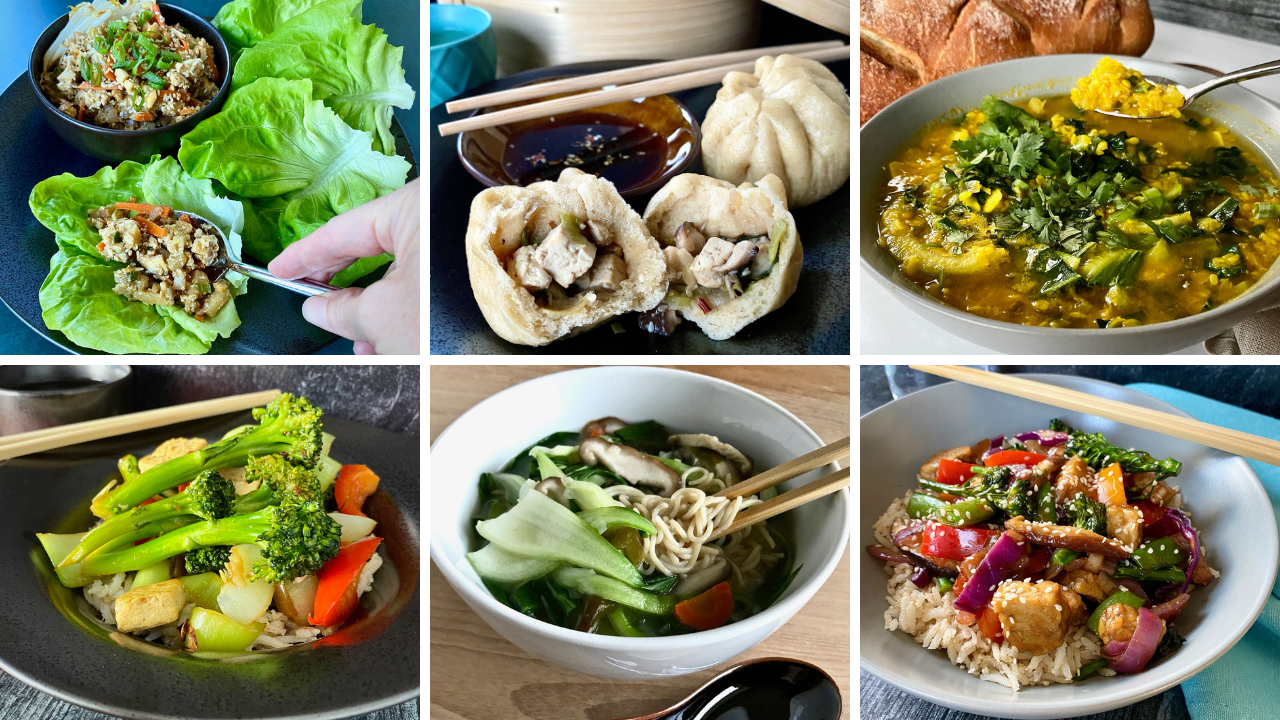
I hope this article has encouraged you to give bok choy a try in your own home kitchen!
If you've been inspired, please DM me on Instagram at @greensagelilfe and let me know. I'd love to hear from you! 😀

